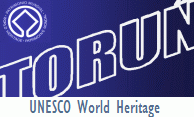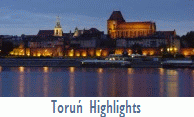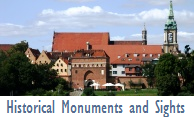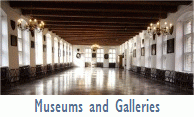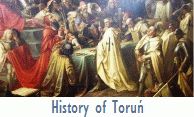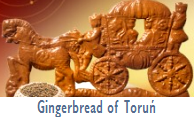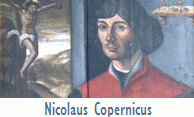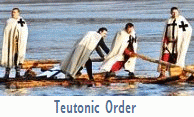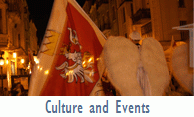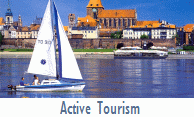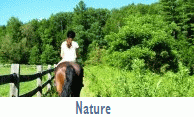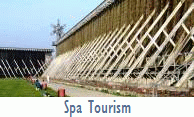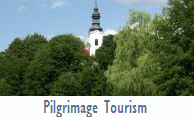|
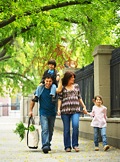 How can one keep children entertained while traveling and make a family trip as enjoyable for them as it is for adults? Surely, every parent is familiar with the following question: ‘Mum, Dad, what shall we do today?’ Children are full of uncontained energy and their curiosity about the world is difficult to satisfy. Toruń can offer a variety of entertainment to its youngest visitors. We will do every effort to help you make the best out of various opportunities to keep your children entertained while you rest. How can one keep children entertained while traveling and make a family trip as enjoyable for them as it is for adults? Surely, every parent is familiar with the following question: ‘Mum, Dad, what shall we do today?’ Children are full of uncontained energy and their curiosity about the world is difficult to satisfy. Toruń can offer a variety of entertainment to its youngest visitors. We will do every effort to help you make the best out of various opportunities to keep your children entertained while you rest.
Toruń tourist offer is attractive enough to cater for all tastes, including those of the youngest generation. The latter can choose 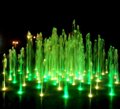 from museums inspiring to learn through play and immediate contact with nearly all exhibits, city parks creating the opportunity to play and have a moment of rest, the Zoo and Botanical Garden - ideal for communing with nature - or a variety of theatrical performances suitable for the whole family. from museums inspiring to learn through play and immediate contact with nearly all exhibits, city parks creating the opportunity to play and have a moment of rest, the Zoo and Botanical Garden - ideal for communing with nature - or a variety of theatrical performances suitable for the whole family.
Why not enrich the sightseeing tour of Toruń magnificent monuments with leisure and play?
 Baj Pomorski Theatre Baj Pomorski Theatre |
|
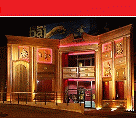 |
The theatre building has a characteristic fairytale look with a unique façade, made to resemble a large wooden wardrobe at the entrance. A large glazed pendulum clock, reflecting the tower of St. James’s Church, provokes a disturbing mystery. Entering the fairytale world is possible only through a distant and overshadowed entrance, which, however, instills no fear in the young theatre-goers as the doors open wide to let them in. Inside they receive a warm welcome from puppets telling well-loved tales and anticipating those to come. The fabulous look is complemented by a skillfully-designed garden.
|
|
 The Planetarium The Planetarium |
|
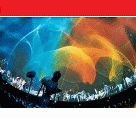 |
| ‘What indeed is more beautiful than heaven, which of course contains all things of beauty?’ Five centuries ago, not in his wildest dreams did Nicholas Copernicus expect that his goal, so distant and unattainable in his time, might be nearly within his reach. And it is not in the least the ambitious plans to explore Mars, but ‘something’ that can be found in Toruń. Here, in his hometown, in Franciszkańska Street in the Old City, a magical doorway to another world opens: the world of supernova explosions, distant stars, planets yet to be discovered or magnificent nebulas. Toruń planetarium dome, towering beside the monumental facade of St. Mary’s Church, attracts all those who are keen to quench their thirst for discovering the mysteries of the Universe. |
|
 The Orbitarium The Orbitarium |
|
 |
| The control panels of the Cassini space probe model are designed to control its appliances and check their intended use. Why not find out where the fuel tank is located or set the spectacular jet engines in motion yourself? Or, using the suspended screens, watch computer animations showing the course of other space missions or presenting the planets of the Solar System? The visitors are welcome to use a number of interactive appliances and models to understand a variety of interesting phenomena occurring in the Universe. Find out if a distant signal reaching the Earth is really delayed, how much a human would weight on Mars or Saturn, and why Jupiter’s atmosphere is stormy. |
|
 The Gingerbread Museum The Gingerbread Museum |
|
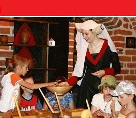 |
| One of the indispensable activities on the must-do list for all visitors to Toruń is learning the centuries-long history and traditions of Toruń gingerbread. The city offers myriad opportunities, yet a visit to the Gingerbread Museum is particularly recommended. There, apart from interesting and colorful exhibitions, one can learn about the profession of an old gingerbread maker. Inside, the visitors can wear historical costumes, listen to the gingerbread legends, get to know gingerbread spices, bake and try gingerbread cakes, and play various gingerbread games |
|
 The Writing and Printing Museum The Writing and Printing Museum |
|
 |
Visitors to the museum are given the opportunity to participate in specially organized workshops to learn the history of the European and Asian paper industry. The practical part of the workshops includes making paper.
The history of the print industry and font production in Europe and Asia is shown through a variety of fascinating exhibits. All participants are given the opportunity to print their own certificates of participation.
In the medieval scriptorium they can find out about the history of writing materials participating in the show of parchment processing, learn about the medieval techniques of paint production and respective stages of painting miniatures. They can try their hand at writing with a goose feather and a stick and thus learn to appreciate the work of the former scribes. |
|
 The Zoo and Botanical Garden The Zoo and Botanical Garden |
|
 |
| Apart from monuments and cultural attractions, Toruń tourist offer includes a number of possibilities to commune with nature. In Toruń Zoo and Botanical Garden children can see animals they know from books or TV at close quarters. The unique aviary with its tropical climate is filled with the sound of whispering cascades and bird singing, now and then interrupted by piercing cries of parrots, surrounded by palms, blooming oleanders and orchids. All those elements give the place quite an unusual look, inspiring to make long-distance travels and all the same inviting back on autumn and winter days. |
|
 Copernicus’s House Copernicus’s House |
|
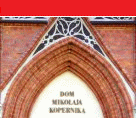 |
The tenement considered to be the Copernicus family house is a typical medieval granary house characteristic of great Hanseatic cities: the residential part was located downstairs, while the upper part was occupied by a stockroom intended for storing goods to be traded. The building thus presents an ideal opportunity to see the only such well-preserved medieval patrician house, with a characteristic interior layout and high-ceiling hall at the front.
The adjacent gothic building contains exhibitions devoted solely to the great astronomer and his period i.e. the turn of the Middle Ages and the Renaissance. Especially interesting is the model of the Santa Maria ship, on which Christopher Columbus discovered America in Copernicus’s time, which was among the elements that influenced the new outlook on the world and the culture of the Renaissance. Of particular interest will undoubtedly be a horoscope written especially for Nicholas Copernicus, envisaging his life as a great explorer…; a model of medieval scriptorium – a bookcase; a model of the Heliocentric System – Copernicus’s greatest discovery; and other astronomer’s activities which are illustrated by a special part of the exhibition. It is also possible to see the astronomer’s study, the models of astronomical instruments used at the time by the great astronomer and a number of other similar things. |
|
 Tony Halik Travelers’ Museum Tony Halik Travelers’ Museum |
|

|
Do you find museums boring? Surely not all of them! Do you think only school can educate you? It is not true! Toruń museums teach fascinating lessons in almost every field, allowing young explores to derive pleasure from learning.
Tony Halik museum is devoted to travelers and souvenirs they bring from different parts of the world. Of particular interest might be the collection by Toruń famous explorer and his wife, Tony Halik and Elżbieta Dzikowska. It encompasses a variety of tokens from non-European countries and cultures, such as their suitcases and travelers bags with airport stickers from many parts of the world, NBC caps, film cassettes and a camcorder, so characteristic of Tony Halik, the reporter, who was always on the move. Apart from myriad photographs and films, he collected everyday objects belonging to people he met on his trips or those of ritual significance. There are a lot of folk craft products and souvenirs, weapon, decorations and charms, as well as dishes for drinking yerba mate – an old traditional, and still popular, Latin American drink made from South-American holly, ritual Cuban masks and ceramic copies of the pre-Columbian gods and soldiers of the Maya culture form Jaina island. The exhibition is dominated by headgear collected by Halik with great passion – a few dozen caps and hats from different parts of the world. |
|
 Nature Museum Nature Museum |
|
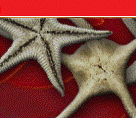 |
The museum offers its visitors not only a unique collection of rare animals and plants, extinct or dying out, but also the opportunity to learn something new, something that is bound to leave a long lasting impression. Beautiful coral skeletons, shells and echinoderms invite the visitors to see the whole collection of the sea and ocean fauna.
Undoubtedly, the hunting collection of African animals evokes most emotions. It consists of exceptionally well-preserved heads of, for example, the black rhino, hippopotamus, buffalo, different kinds of antelopes and other mammals. The history of the collection is rather unusual: it was brought to Europe by a certain affluent land owner and a safari lover of Polish origin, following his expeditions to Africa at the turn of the 19th and 20th century. The trophies were processed in Bremen and are still admired for their perfect quality. Following the agricultural reform, they lay forgotten in various leaky attics until they were finally brought to the museum. There, they underwent a strenuous and several years’ long restoration process. Other exhibited rare animal species include the platypus, echidna, tree pangolin, and the skeletons of kangaroo and anteater. |
|
 The Vistula cruise The Vistula cruise |
|
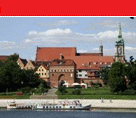 |
| The Vistula – often referred to as the Queen of the Polish rivers – has also something to offer young tourists and their families. The city panorama and its surrounding area seen from the shipboard or a floating cafe are bound to provide unforgettable experience. The cruise might be a lovely diversion from regular sightseeing or a relaxing break. |
|
 The Vistula crossing to Kępa Bazarowa The Vistula crossing to Kępa Bazarowa |
|
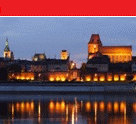 |
| Crossing the Vistula from a little port in front of the Bridge Gate on the ‘Katarzynka’ boat to Kępa Bazarowa on the opposite bank of the river can be worthwhile. A family trip to Kępa Bazarowa islet (>>>) is highly recommended as it where the city panorama, considered the second of the seven wonders of Poland, is best seen (>>>). One can also visit the ruins of the medieval Dybów castle (>>>) – the former seat of Polish starosts (district governors) as well as the Vistula traffic control point and the border guard on the Teutonic-Polish border. The islet itself is a unique nature reserve. |
|
 The Miniaquapark The Miniaquapark |
|
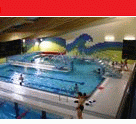 |
|
The aqua park boasts two swimming pools on its premises. The first is 25 m long, 12.5 m wide and 1.35 – 1.80 m deep, whereas the other is mainly used for recreational purposes. It is equipped with jet streams and hydromassage. Particularly attractive is the 60-meter slide, Jacuzzi and sauna the aqua park has to offer.
|
|
 The Rope Course Park The Rope Course Park |
|
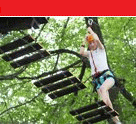 |
The course is a combination of challenges constructed from ropes installed above the ground and strung between trees. It has been designed for a wide range of users, including people with no experience, parents and older people. Using the course is an unforgettable experience, ideal for those who seek adrenaline rush and like outdoor challenge.
For safety reasons, all participants are required to wear safety equipment, consisting of specially designed harness with a lunge lead, snap links, pulleys and a helmet, and take part in the equipment demonstration by an instructor. The park offers two ropes courses with a number of challenges, using which requires agility, fitness and, above all, overcoming the fear of heights. The adult course is designed for people of at least 160 cm in height, while the one for children requires the height of at least 120 cm. For those who need extra support and can afford to spend some extra money, there is an instructor available to help cover the whole distance. |
|
 The Teutonic Castle ruins The Teutonic Castle ruins |
|
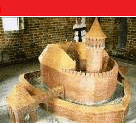 |
|
Being the first Teutonic settlement on the Polish land, Toruń could boast the castle of the Commander, one of the most important in the Teutonic State. It was destroyed by Toruń burghers in 1454 and now the only surviving elements include the somber vaults, the Gdanisko tower and the walls of the ground floor and tower. As illustrated by the model, Toruń castle differed from other Teutonic structures of this kind built later in terms of its layout, which was square rather than horse-shoe-shaped. The vaults contain an armory, a kitchen, a scriptorium and the chamber of fear, which might serve as an interesting diversion.
|
|
 The Tuba Dei Bell The Tuba Dei Bell |
|
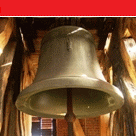 |
| The famous Sigismund Bell at Wawel may be bigger than Toruń Tuba Dei bell, yet it is definitely younger. Toruń bell, which literally translates as ‘God’s trumpet’, was cast in 1500 and until 1521, which was when Sigismund Bell was cast, it proudly bore the name of the largest bell in the Kingdom of Poland. Today it is the biggest Polish medieval bell. Why not climb the gothic tower of St. Johns’ Cathedral to see the unique, over 2 m high and 7.5 ton heavy giant with your own eyes? |
|
| The Gingerbread City |
|
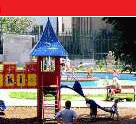 |
| In the old medieval moat separating the Old and the New Cities of Toruń, among the gothic fortifications, the Gingerbread City for young children has been created. It is a large playground with a lot of greenery, a gingerbread-shaped sandpit, a gingerbread castle with a slide and a gingerbread cabin - a roundabout. It is also equipped with swings and seesaws, a climbing wall and comfortable benches for the young and the old. However, the greatest attraction of the Gingerbread City is the wading pool for children to use in the summertime. The patron of the gingerbread land is Titus de Zoo, the chimpanzee, a cult cartoon character from comic books by Papcio Chmiel (Henryk Chmielewski) "Titus, Romek and Atomek". The place is enclosed in and guarded. |
|
 Ethnographic parks Ethnographic parks |
|
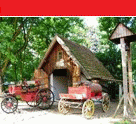 |
A sightseeing tour of Toruń should not only be limited to visiting medieval, Renaissance or Baroque monuments. It should also include a cultural, leisure and culinary experience, as well as a certain amount of active entertainment. Toruń offers an insight into the tradition of the old Polish countryside from the area of northern Poland, especially from the Kujavia, Kashubia, Chełmno, Tuchola and Kociewie, together with the differences and everyday life of its people. The trip might have particular significance and educational value for younger generations, who, surrounded by the 21th-century civilization are often unaware of what the life of people looked like 100 and 200 years ago. Especially attractive might be a visit to the Museum of Ethnography and the Park Museum due to their central location in the city, right beside the medieval Old Quarter. It creates a unique opportunity to see the world of wooden cabins where the time stood still and the oasis of peace and quiet among the noise of busy Toruń streets.
A similar place is the Fishing and Agricultural Farm in the district of Kaszczorek (>>>), with the collection of elements illustrating the life and work of raftsmen and fishermen long time ago. |
|
 Toruń Fortress Fort No. 4 Toruń Fortress Fort No. 4 |
|
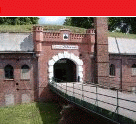 |
In the 19th century Toruń was recognized as the Prussian fortress of the first rank and became one of the most important and biggest military centres in the Kingdom of Prussia. The period saw the development of various types of military and war infrastructure, including 15 main and intermediate forts.
Fort No. 4 is an example of an exceptionally well-preserved element of the outer circle of Toruń Fortress from the late 19th century. The unique aura of this place will take you to the time of steam and telegraph. You will spend unforgettable time in the labyrinth of stairs and corridors, find out about the history of the militaries, and see the 55-ton armored artillery vantage points, rotating vantage towers, enormous powder magazines and other such things. |
|
 Viewing points Viewing points |
|
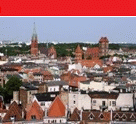 |
| All ‘little explorers’ want to know and, above all, see more. How can one make them happy? A visit to one of several Toruń viewing points might be a good idea. There the city becomes ‘clear as daylight’ and they are able to recognize the places already visited and those yet to be explored. They will be given the opportunity to find the most characteristic buildings of the city and see the layout of the ‘Old Quarter’. The City Hall and the cathedral towers, as well as the viewing platform on Kępa Bazarowa islet, ensure an excellent view of the city from nearly all perspectives. |
|
 Barbarka Barbarka |
|
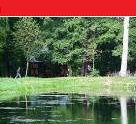 |
A walk to Barbarka will abound in a number of nature, historical and leisure attractions. The history of the located in the forest hamlet dates back to the 13th century and was initially linked with the cult of St. Barbara, who, according to a legend, was to appear before a hermit. Today it is an ideal education and leisure spot for tourists and local people.
Apart from their recreational purposes, Barbarka Forest School and Hamlet foster the development of ecological, historical, patriotic and spiritual awareness, which is facilitated by a close contact with nature.
Visitors are welcome to use the Rope Course Park, playground, outdoor grill stations and fire pits. The hamlet with its neighbouring area offers a number of tourist trails of educational value for those who are interested in nature and the history of the region. It is a place where the old and the more recent history overlap: the old pilgrim centre subsequently became the cemetery of the victims of Hitler's terror. It is characterized by an attractive forest landscape (oak and alder forests), surrounding ponds formed by the accumulated stream water which powered a water mill until the early 20th century. Apart from the common pine and mixed forests, there are luminous oak forests, hungry wet-ground forests, alder and alder swamp fen. |
|
 The Cosmopolis Fountain & the ‘Toruń’ planetoid (12999) The Cosmopolis Fountain & the ‘Toruń’ planetoid (12999) |
|
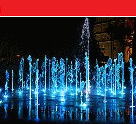 |
|
Toruń – the most astronomical city in Poland, the birthplace of Nicolaus Copernicus Thoruniensis with a number of academic and cultural institutions, often emphasizes its numerous references to astronomy. It offers the visitors a considerable number of ‘cosmic’ attractions, including the Cosmopolis Fountain, ‘dancing’ to music and light, and the neighbouring orbit with the sculpture of the ‘Toruń’ Planetoid (12999).
The fountain is the reference to the eight page of Copernicus’s masterpiece "De revolutionibus..." presenting the heliocentric system of the world. It has 113 water nozzles located on the orbits of Mercury, Venus, Earth, Mars, Jupiter and Saturn, ejecting water into the air.
The planetoid circulating between the orbits of Mars and Jupiter was discovered on 30 August 1981 by American astronomer Edward Ted Bowell. He carried out his study using a photographic film in Anderson Mesa Station of Lowell Observatory in Arizona.
|
|
 The Walk of Toruń Merchants’ Marks The Walk of Toruń Merchants’ Marks |
|
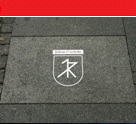 |
|
Hanseatic Toruń and its merchants maintained close and extensive trade and cultural contacts with the whole of Europe, in particular with Flanders, England, Ruthenia and Hungary. The great land and sea trade gave rise to Toruń’s power and created the opportunity for local people to accumulate wealth. In the Middle Ages Toruń harbour hosted seagoing ships and, according to the surviving registers, there were as many as 172 Toruń merchants involved in the great sea trade, which is why Toruń was referred to as an inland sea harbour at the time.
In memory of Toruń merchants, 25 marks they used to mark their commodities have been placed on the street. Only a small number of medieval merchant families involved in the great international sea trade are listed here.
|
|
| The Toruń dragon |
|
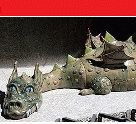 |
A large number of visitors are delighted to hear the legend of Toruń dragon, supposedly seen in Toruń in 1746. The official account of its appearance made in Toruń chancellery on 13 August 1746 was given by Johann George Hieronimi, the carpenter’s master, who saw the unusual creature on 13 June the same year, and Katharine Storchin, the wife of a city soldier and a member of the city guard, who allegedly saw the dragon early in July. According to her, the dragon was 3.5 ell long (presumably about 2 metres) and had four forefeet similar to those of a saurian, which, however, were webbed and resembled bat wings.
The genuine record of the testimonies is officially regarded as missing, though it was supposedly seen as recently as the 1960 in Toruń Archive. The record, supplied with the picture of the dragon, was published in 1934 in the Słowo Pomorskie magazine. It has been classified according to its appearance as a flying dragon with reptile and bird features. |
|
 Medieval Toruń townsmen Medieval Toruń townsmen |
|
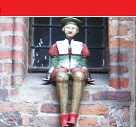 |
The gothic walls of Toruń have recently been garnished with ceramic figures of medieval Toruń burghers. Clad in costumes and headgear characteristic of a given period and situated in different corners of the city, they give the place unique appeal and climate as they emerge from behind the bricks. Here and there you can see a Teutonic Knight or Toruń angels.
The quest for the figures might be an unconventional way of discovering Toruń’s nooks and crannies. |
|
| The Donkey – a peculiar Toruń pillory |
|
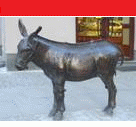 |
The city pillory, a wooden donkey with a sharpened tin ridge along its spine, appeared in the corner of the Old City Square presumably in 1629. It was mostly used to discipline Toruń soldiers who, seated on its back, frequently had lead weights tied to their legs to intensify the pain.
The convicts suffered double punishment: in addition to the protruding back sinking into their bottom, they were exposed to public humiliation. |
|
|
Curent local weather in Toruń  | temp. 7.3° C |
|
 How can one keep children entertained while traveling and make a family trip as enjoyable for them as it is for adults? Surely, every parent is familiar with the following question: ‘Mum, Dad, what shall we do today?’ Children are full of uncontained energy and their curiosity about the world is difficult to satisfy. Toruń can offer a variety of entertainment to its youngest visitors. We will do every effort to help you make the best out of various opportunities to keep your children entertained while you rest.
How can one keep children entertained while traveling and make a family trip as enjoyable for them as it is for adults? Surely, every parent is familiar with the following question: ‘Mum, Dad, what shall we do today?’ Children are full of uncontained energy and their curiosity about the world is difficult to satisfy. Toruń can offer a variety of entertainment to its youngest visitors. We will do every effort to help you make the best out of various opportunities to keep your children entertained while you rest. from museums inspiring to learn through play and immediate contact with nearly all exhibits, city parks creating the opportunity to play and have a moment of rest, the Zoo and Botanical Garden - ideal for communing with nature - or a variety of theatrical performances suitable for the whole family.
from museums inspiring to learn through play and immediate contact with nearly all exhibits, city parks creating the opportunity to play and have a moment of rest, the Zoo and Botanical Garden - ideal for communing with nature - or a variety of theatrical performances suitable for the whole family.


